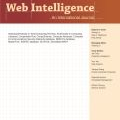While frameworks such as the WHO Age-Friendly Cities have advanced urban aging policy, rural contexts demand fundamentally different analytical approaches. The spatial dispersion, terrain variability, and agricultural labor dependencies that characterize rural aging experiences require moving beyond service-domain frameworks toward spatial stress assessment models. Current research on rural aging in China exhibits methodological gaps, systematically underrepresenting the spatial stressors that older adults face daily, including terrain barriers, infrastructure limitations, climate exposure, and agricultural labor burdens. Existing rural revitalization policies emphasize standardized interventions while inadequately addressing spatial heterogeneity and the spatially-differentiated needs of aging populations. This study developed a GIS-based spatial stress analysis framework that applies Lawton and Nahemow's competence-press model to quantify aging-related stressors and classify rural villages by intervention needs. Using data from 27 villages in Mamuchi Township, Shandong Province, we established four spatial stress indicators: slope gradient index (SGI), solar radiation exposure index (SREI), walkability index (WI), and agricultural intensity index (AII). Analysis of variance and hierarchical clustering revealed significant variation in spatial pressures across villages and identified distinct typologies that require targeted intervention strategies. The framework produces both quantitative stress measurements for individual villages and a classification system that groups villages with similar stress patterns, providing planners and policymakers with practical tools for designing spatially-targeted age-friendly interventions in rural China and similar contexts.
翻译:暂无翻译



